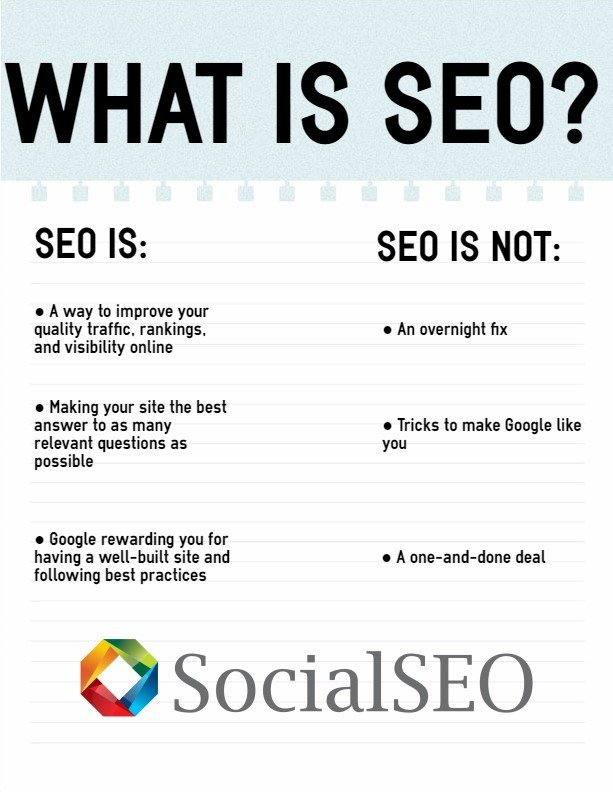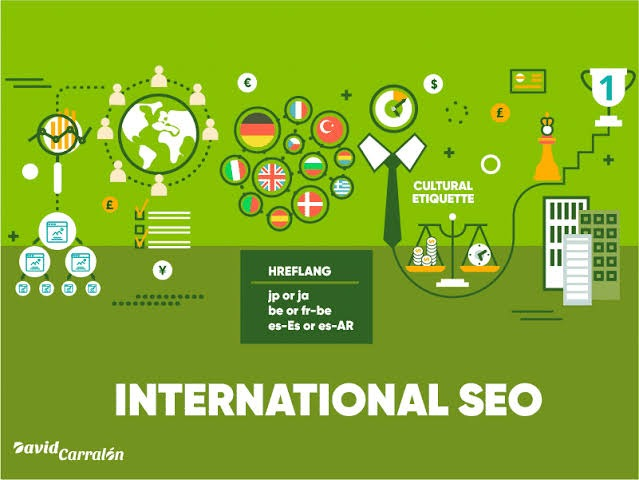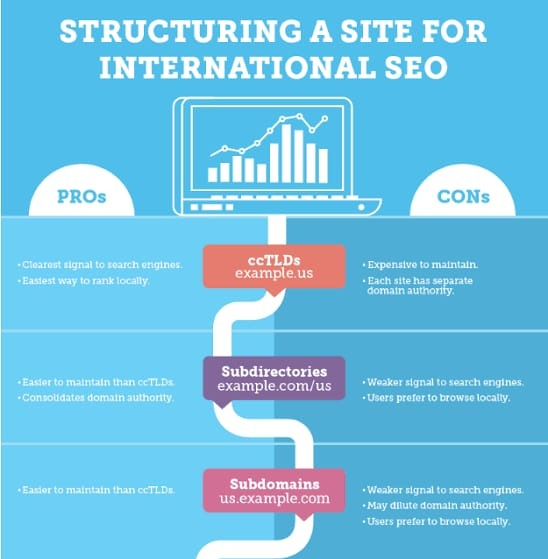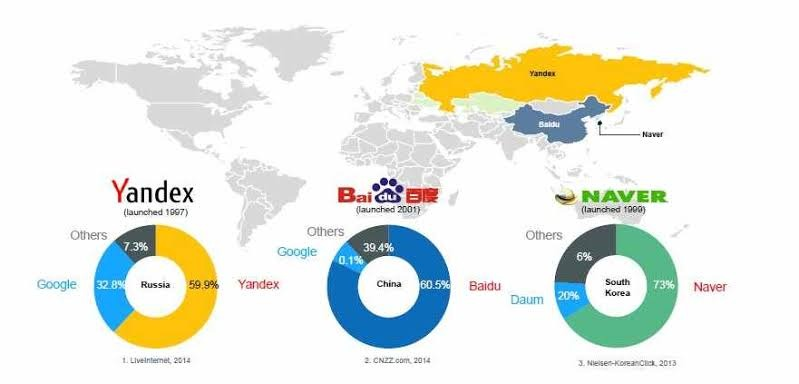Global SEO: 5 Innovative Ways to Optimize Your Website for Other Countries

Table of Contents
- What is SEO?
- Is SEO Really Important?
- What Does the term ‘International SEO’ Mean?
- How to Craft a Website As Per Global SEO
- Key Takeaways
- FAQs
Have you wanted to give your website an international push for some time now? But just can’t get it quite right? Itching doubts make it almost impossible for you to pull this off? Well, you have come to the right place! This article will dissect how to do international SEO and throw global SEO tips to simplify your life.
But before we get to the real deal, take a look at the basic overview of SEO to help you fully grasp the tips that will come up in this international SEO guide.
What is SEO?

So, whenever you do a simple Google search, at least 7 to 10 websites appear. But have you got the time and patience to scroll down and read all of them? The answer, in all probability, is that you don’t. Then what is the most predictable course of action that you or any other busy person would take? You will go for the first website that pops up in front of you. Now, if you have a website and want to survive in this fast-paced digital world, you have got to get the hang of creating content according to SEO.
Start with having a clear idea of what SEO is. It is a process that helps enhance the visibility of your page when people look for products and services like the one you offer on search engines. It gives you an edge over other websites and puts you in the spotlight. One might wonder how it does that; well, if you are familiar with search engines and how they work, you will know that they use bots that move from one website to another, gathering all the information they can to formulate an index. And this is the index they then analyze further to produce a ranking of the websites eventually.
Unfortunately, these engines won’t make it very easy for you and your website to stand out; you will have to figure out a way to stand out on your own. This is where SEO comes in; it will lay down some ground rules for both the content and website structure to be put to use. With the use of essential keywords in an optimal way and an intelligent choice concerning the structure and architecture of your website, you can boost your website’s presence.
Is SEO really important?
Are you doubtful about SEO and are wondering if it will make a difference? We will let you in on this little (not so) secret! Every day trillions of people show up on the search engines to do a commercial search, either for a product or service. Digital marketing is a booming industry filled with potential. Every business will have to think about going online, and when it comes to business, taking care of competition is of utmost importance. With SEO, you will create your website in a way that will encourage visibility. This will increase your chances of being chosen among other websites by people to buy products and services. And this is not the case for just online businesses; anything you put up online needs visibility, and SEO will do just that! And now, with international business exploding, global SEO is taking over the world.
Global SEO Guide: What Does the Term ‘International SEO’ Mean?

Today’s world is unbelievably interconnected and interacts internationally as frequently as you might talk to your local friends. This is a whole another level up for the commercial world. This creates an environment where taking your website internationally is imperative and lucrative. A deep and clear understanding of basic SEO will surely give your efforts to go international a boost. But general SEO will not be enough to make a remarkable international presence possible. For that, you will have to crack the code of how to do international SEO. You will have to follow some effective and handy tips to easily figure out how to go about and create a website as per International SEO.
In simple terms, global SEO entails optimizing your content to have visibility even in other countries. This surely is a complex task as there are various extra elements that you will have to keep in mind to make global SEO work. Every country has its own dialect, and additionally, different countries across the world don’t really use the same search engines. So, how to optimize websites for other countries?
You will have to create content that will be valid among diverse regions, works with different languages, and multiple search engines. Don’t fret; you will achieve this with some guidance and effort. Take into consideration the below-given international SEO tips to give your website an international presence as soon as possible:
5 International SEO Tips: How to do Global SEO
Tip 1: Know your target audience as per the global SEO
First and foremost, know your target audience. What are the countries that you would like to target? Map out their demographics and other elements like cultural norms, behavioral tendencies of people there, local internet usage patterns, and cyber privacy policies. All of these vary from country to country, and to connect to people worldwide and sell to them, you must know what your clients want and what they don’t.
Say you want to sell furniture online and create a website. Now, you feel like taking the business to different countries other than yours. Creating another website in such a case will require extra effort. You will have to use the keywords in the local languages, which in this case is furniture, so you will use the word furniture in local languages as well. You will have to consider the furniture purchasing behavior in different countries. Hypothetically, say you choose XYZ country as part of your target audience. Now, it is considered unlucky to buy small round tables in this country. If you are not careful about such things, you will lose the audience. Exercise extra caution while you create the website for an international audience. Study, do your homework and understand what your international users of specific countries want and what they will repel.
Tip 2: Customize your website as per language

As mentioned above, people all over the world speak different languages. And if you want to reach a global audience, consider the language factor strongly. Provide keywords in their native language, too, so that the search engine catches on and ranks you accordingly. Keep the keywords of optimal length and use them with an optimal frequency. This tactic is called language targeting; it will act as a soft landing method to help you know more about which countries engage more with your brand. Many e-commerce giants have been able to ace because they practiced using a variety of languages for their websites as per the guidelines on how to implement international SEO.
Tip 3: Location-based site structure

Keep an eye on the language and locations tab under Google Analytics to know what countries give more traffic to your website. Knowing the location is important on multiple parameters; the business perspective is one of the most important. You have to figure out the best locations where you can sell your products in large amounts. After performing your basic research on this, take care of the website structure.
International SEO will require a carefully crafted website; there are three options to choose from:
- Country-code top-level domain (ccTLD): You can go for ccTLD if you are certain of the resources you have, and can help you achieve popularity even if you have to build the site from the very start. ccTLD uses two-letter codes to indicate to the search engine the visitor’s country. The advantage of using this structure is that it sends a clear signal to the engine, but the disadvantage is that it can be very expensive to manage.
- Subdomains: Subdomains are a good option if you don’t want to complicate your site’s structure. They allow you to segregate specific site contents targeted at specific audiences based on language and geography.
- Sub directories: This structure will allow your page’s content to be placed under subfolders or sub-directory under the main domain. Although it’s easy and cheap, the problem is that its signal is weak.
Along with these, another important factor that can come under structuring the site is using hreflangs in your website’s URLs. This will tell the search engine the language you are using and rank your website accordingly.
Tip 4: Consider search engines other than Google

Many other search engines, apart from Google, are very popular among the world’s most developed economies. If you haven’t optimized for additional search engines, consider your global SEO journey incomplete—study search engines worldwide. For example, China uses ‘BAIDU’, Russia ‘YANDEX’, Japan ‘YAHOO’, and the like. Hence, optimize your content accordingly.
PRO TIP 5: Keep measuring your global SEO efforts to keep tabs on what works and what doesn’t.
Key Takeaways
Here are some key takeaways from the above international SEO tips, which will guide you in creating your website as per global SEO.
- For successful international SEO efforts, strategize and map out your target audience.
- Choose the location as per the requirements and potential of your business, and then create the website accordingly.
- Be careful while choosing the structure of the website. Consider the pros and cons of all the available structures and choose wisely.
- Use hreflangs to boost your ranking on an international level by indicating language to the search engine.
- Do not neglect other search engines out there; always have a well-thought-out plan to tackle them as well.

FAQs
Global SEO is the process of indicating which countries your website would like to target to the search engines. It enables you to give your website an international reach.
Yes, it is different for different countries as language usage and other differences are observed across the globe.
You must translate your URLs and Metadata to pull off multilingual SEO. Along with this, you must use hreflangs and optimize your content’s keywords.
For this, you must use either ccTLD or Subdomain site structure. You can use translation services by hiring efficient translators and editors.
To get international traffic on your website, you should keep tabs on the traffic you already have via Google SEO Analytics. Make a note of your trends and create content accordingly.
Latest Blogs
Explore how Google’s 2025 AI search updates triggered ranking chaos. Learn actionable strategies to adapt your SEO for AI Overviews, zero-click searches, and SERP volatility. Stay ahead now.
Learn how to rank on AI search engines like ChatGPT, Perplexity, and Gemini by optimizing your content for authority, structure, and relevance. Stay ahead in AI-driven search with this strategic guide.
Explore the best healthcare SEO services for your medical practice. Improve online visibility and effectively reach more patients in need of your services.
Get your hands on the latest news!
Similar Posts

Artificial Intelligence
6 mins read
The Role of AI in Digital Marketing: AI Article Generators Transforming Content Creation

Artificial Intelligence
4 mins read
How AI Content Creator Is Shaping the Future of Digital Content

Digital Marketing
3 mins read